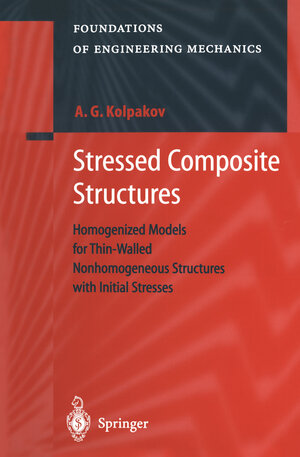
×
![Buchcover ISBN 9783540452119]()
“It is a book that can be useful to engineers, physicists and mathematicians, among others. … In my opinion the book is well written, with clear explanations, and develops a very practical theme in the field of composite materials. The text and bibliography are a source of significant knowledge for specialists of different areas.” (Reinaldo Rodríguez-Ramos, Mathematical Reviews, September, 2020)
Stressed Composite Structures
Homogenized Models for Thin-Walled Nonhomogeneous Structures with Initial Stresses
von A.G. KolpakovThe mechanics of structures with initial stresses is a traditional part of structural mechanics. It is closely related to the important problem of stability of structures. The basic concepts of elastic stability of structures go back to works by Euler (1759) and Bryan (1889). Later, it was found that the problem of deformation of solids with initial stresses is related to variational principles and nonlinear problems in elasticity; see Trefftz (1933), Marguerre (1938), Prager (1947), Hill (1958), Washuzu (1982). Historical detail up to the 1940s can be found in the book by Timoshenko (1953). Observing the basic concepts of the traditional mechanics of stressed structures, we agree that these are suitable for uniform structural elements (plates, beams, and so on) made of homogeneous materials, but not for complex structures (such as a network plate or a lattice mast) or structures made of composite materials (such as fiber reinforced or textile materials). Many concepts of the classicaltheory, such as a cross section or neutral plane (axis), correspond to no mechanical objects if we consider an inhomogeneous structure. As a result, we come to the conclusion that it would be useful to have a theory of thin inhomogeneous structures developed on the basis of 3-D elasticity theory with no simplifying assumptions (with no a priori hypothesis).



